#panthera lineage
Explore tagged Tumblr posts
Text
Phylogenetic wild cat tournament - FINAL
Panthera, ocelot, bay cat, lynx, leopard cat, domestic cat, puma and caracal lineages
Family: Felidae - THE BEST CAT
Genus: Panthera, Neofelis, Leopardus, Catopuma, Pardofelis, Lynx, Prionailurus, Otocolobus, Felis, Herpailurus, Puma, Acinonyx, Caracal & Leptailurus
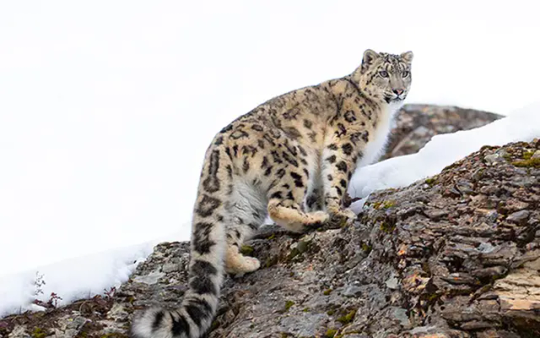
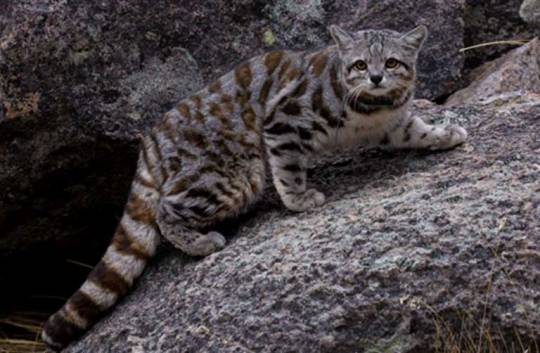
My followers have a type, I think.
Snow leopard

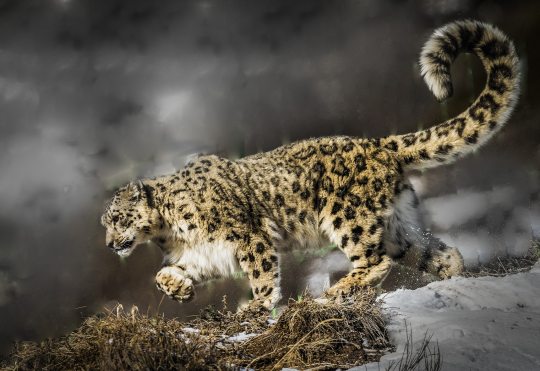
Andean mountain cat


#polls#cats#tournament poll#phylogenetic wild cat tournament#panthera lineage#ocelot lineage#snow leopard#andean mountain cat#well everyone... it was a good run thank you#i'm an influencer now
258 notes
·
View notes
Note
Ok, so I have a question that had been intriguing me for a while now. In your Point of Pride Universe, are the Elves shapeshifting only and specifically into members of the Pantherea lineage (the True Big cats) or just cats big enough to have a sensical mass to size transformation?
(For example, cheetahs and pumas are not True Big Cats.) (Have a cladograph for reference)

Not just the true big cats! And I am playing a bit with species for fantasy worldbuilding reasons (for example, the Teleri are commonly clouded leopards, which are irl very comparatively small to many other cat species, so…yeah, they’re a bit bigger of cats in this au than their real-world counterparts).
There are definitely going to be both cheetahs and pumas—we haven’t met any of the cheetahs, but I think Russandol has mentioned his cousin Tamarille on Nerdanel’s side, and she’s a puma.
(Putting the rest of this under a cut, because this got LONG! Warning: Worldbuilding Rambles Ahead!)
It’s kind of just what I choose. And though there are general trends (from the primordial woke-up-in-the-same-area ‘groupings’ of elves with certain forms) they aren’t clear-cut, since intermarriage happens regularly, and social lines are drawn differently as different subgroups of elves immigrated/dispersed in different directions. Vanyar elves are mostly lions, but there are also many families which more often have cheetah forms, and decent numbers of many others. Because all Vanya denotes (at least in this universe—there might have been something about waking up first that I’m not going by) is that they were the first group who came first and fastest to Valinor. It’s where and when they went, not based on what cat forms they have.
I will say (because I now have a chance to ramble! Thank you for the question/opportunity to do this!) that the genetics for this are pretty meaningless anyway. This would be DIFFERENT if the elves had, like, evolved this way, but that isn’t really how tolkien’s ‘I just woke up looking like this’ origin of elves works. So the genetics are also, like, by design or something.
(This is also why Nerdanel and Feanaro’s children aren’t leopard/tiger hybrids or anything. I am not good at worldbuilding genetics because I’m not an expert or anything. But instead of inheriting, say, leopard genes from one parent and tiger genes from another, they inherit one ‘active’ form in some sort of cohesive genetic package and can carry others, which might be passed down to their own children. This is why Tyelkormo is a snow leopard (Feanaro carries that genetic potential from Miriel); children might not have the same form as one or the other of their parents, it might be passed down from further back in their family tree)
(I have no idea if that makes any sense)
Now, I have not yet decided if there will be even more variation. But at this point the only species I have been working on with regards to cultures/characters have been (to reference your cladograph!) the Panthera and Puma lineages, although that isn’t necessarily a hard and fast rule that I have set down yet but speaks more to which areas of this au I have built and thought out. I’m still figuring a lot of this stuff out with regards to the long term stories I want to tell and the characters and cultures that will be in focus for those stories.
I am sorry this answer is so extensive, and I went off on so many tangents! There’s a little less concrete detail than for some of my other worldbuilding areas of focus. But thank you so much for the question, and for the opportunity to talk about some of these things that I am always thinking about and working on!!!!<3<3<3 And if there was anything here I was PROFOUNDLY off-topic or incoherent on, just let me know and I would be happy to clarify :)
11 notes
·
View notes
Text
Morphology of Gurav's Beast-Folk
I've introduced the races of my setting culturally in the past, but I've never talked about how they physically appear & vary! Here's the main four featured in Regicide:
Mustel
The Mustel are, like all of the beast-folk based on a number of animals from a single taxonomic category. The Mustel of course are based on mustelids! The word 'Mustel' is Pantheran in origin, but in the Mustel language, Therian, they call themselves The Neulah.

The main species from our world that inspired the Mustel are pine martens, sables, wolverines, and raccoons. Depending on where they hail, fur colours vary, but save those who live in secluded colonies, the majority of them have flexible bodies, short & strong limbs, and paws built for climbing. Mustel are omnivores who consume fruit, fleshy vegetables, seeds/nuts and insect meat. Their natural adaptations have fine tuned their minds into deadly weapons, creating many powerful archanists, but they will usually prefer to climb or run from danger than fight, as many of them prefer to be gatherers rather than hunters.
Panthera
The Panthera of course relate to their namesake, panthera. 'Pan' meaning divine lineage, and 'thera' referring to the colour of the sun.

The Pantheran homeland ranges from jungle to savannah, desert to tundra, so the possible shapes and cultures range wildly. While most that have travelled South to new lands are like lions with pale fur & long wiry manes, others may be orange with dark stripes like tigers or even fully black furred like panthers. Panthera are HUGE carnivores with bodies built for overpowering prey. They are known for taking down giant beetles and elephants with ease, using a mixture of persistent chasing, retractable razor claws, and their powerful jaws to hunt. They usually hunt within prides, but those who live in the tundra and jungles divide and conquer as solo hunters. All Panthera have a mutation much like gigantism, causing them to reach incredible heights due to their 200+ year lifespans, the tallest recorded being Gurav's King Bernard at 20ft. As an added note, much like lions, they display sexual dimorphism, with female Panthera not growing manes. Many tinctures and potions exist to assist those who wish to grow manes, as well as shed them.
Wulpen
The Wulpen, known in their dialect of Therian as The Ix, are based on the Vulpez family. Specifically, the fennec fox & the hoary fox. They hail from the deserts of Swef and have a small habitat compared to the other beast-folk here.

Wulpen are carnivores who's diets in the modern age is primarily fish and other meats of the sea. Due to their small arid landscape, with the only relief being deep fissures and a single river, the Apophis Nile, the Wulpen have taken to the sea as their home, with their government being made up of the most respected pirate lord in a yearly ritual of mob rule. Wulpen are small, having evolved to hunt prey through speed and fast reaction time, once standing on the edges of rivers to leap up and dive into the water when their prey passed by. Now, they rely on fishing nets and spears.
They have a beard like scruff of fluffly long hair along their jaws and at the base of the neck, some even growing long fur on the chin and muzzle like a bearded dog. They are very proud of their longer fur, and will groom and braid this fur regardless of gender.
Dentar
Known as the Gilter in their native language, Gilres, the Dentar are based on the order Rodentia, more specifically the various species of rat.

As omnivores, Dentar are adaptable, though culturally have drawn a line between invertebrates as food, and vertebrates being taboo to hunt and eat. Aside from that, any vegetation is fair game for these people, as they are particularly hardy, even faced with rotten meat. With keen noses and even more keen hearing, by nature Denar have a more fearful disposition when faced by predation, but their history of dragon hunting and conquest would suggest otherwise.
As one of the two natives of Gurav, Dentar have been heavily effected by the Pantheran occupation. But, when they arrived the Dentar were still struggling from the long-term effects of hundreds of years of war between each other. So they only existed as small insular clans that shied away when visitors arrived, and were not seen as a threat to the Panthera. As a final note, Dentar have unusually long tails these scaled appendages are fully prehensile, and believed to be helpful for divining the truth when faced by deception. Or in some cases even seen as a conduit to god.
-
That's all for now! Thanks for reading!! 💖
#furry art#furry oc#fantasy#worldbuilding#fantasy writing#fantasy worldbuilding#regicide#regicide book
36 notes
·
View notes
Text

More differences on different slugs!
headcanons under the cut
if you didn't read my previous post on slugcat headcanons, then you prolly should as i'll leave out some stuff i explained there.
basically though, there is two slugcat species or subspecies. still not sure what they count as. We have slugcat felis (surv, monk, riv, saint) and slugcat panthera (arti, hunter, spear)
Spearmaster and rivulet are modified, so it's more saying what type was used as a base.
Gourmand is a special case, as they are actually a hybrid! The hybridization caused some weird stuff to happen, and they actually have a form of gigantism. It also caused them to have a weird digestive system, letting them eat meat but not process it well. This is probably the reason behind their size as well. Gourmand is not only fat though, they are buff! it's just not visible. They're like the equivalent of a strongman.
Saint is a bit special, as they're so far in the future. They're still felis, just how it evolves in the future! I'm not sure if it world require it's own taxon name, though.
It requires going into lineage trees, but a rough timeline chart should explain things.

Panthera and Felis were seperate, but ended up merging together (gourmand is an example of this). And over time, Felis evolved to deal with the cold. Leading to saint. Thick, long fur, and a larger body do this.
Saint is likely also modified as well, mostly their grapple tongue.
Anyways. This also shows the general stature of the slugcats. Not heights, but their builds at least. Some of their colors / patterns were changed / removed for better visibility, as well as being easier to draw. I kept important details though!
#pinemartart#rain world#rain world downpour#slugcat#rw downpour#rainworld downpour#rw survivor#rw hunter#rw spearmaster#rw gourmand#rw rivulet#rw saint#rain world headcanons#i love writing i love putting these things into words (lying)
30 notes
·
View notes
Text
btw kairoh gets mistaken for an american lion allll the time because 1) machairodus genus cats have long tails like panthera cats and 2) you can’t see her sabers when her mouth is closed. so if you don’t know what youre looking for in the skull/limb/lumbar anatomy you’d think she was a panthera genus cat. this upsets her very very much. not only is she a sabercat, not a panther, she’s from one of the most ancient and well-established sabercat lineages of all time god damn you
5 notes
·
View notes
Text
i regret looking at the notes on this post because i am in tears. "my hypothesis is that--" babes please remember how you learned to make a hypothesis back in third grade. you can LOOK UP what the gene is! you don't have to just MAKE UP FACTS to show off how smart you are! PLEASE actually click through links before speculating or just making claims, jfc
the paper OP links is a review on the evolution & genetics of mammilian coat pigmentation by Eizirik and Trindade. Using control+f for "placenta" easily gets you the passage in question:
Using domestic cat pedigrees, Eizirik et al. (108) identified two genomic regions associated with variation in coat patterning and proposed a two-step model for mammalian pattern formation. The first step involves the establishment of a prepattern in the skin early in embryonic development, and the second is the differential pigmentation of coat areas delimited by the prepattern. Kaelin & Barsh (109) further developed and discussed this model, which served as a basis for the discovery and characterization of the first genes involved in this process (56). One of them was TAQPEP (or LVRN), an aminopeptidase that was until then known only as an important player in human placentation. When this gene is mutated in domestic cats and cheetahs, coat patterns become less organized (i.e., decrease their periodicity), indicating that it acts in the first step of pattern formation (prepattern establishment) (56). However, how an aminopeptidase that is essential to maternal–fetal interaction in humans acts in the establishment of coat markings in felids is still unknown.
So basically, Eizirik et al. suggest that in their model for cat coat development, there's some sort of establishment of what the pattern will look like during embryonic skin development, which they call "prepatterning." That "56" citation leads to a paper that found that two genes (Taqpep and Edn3) contributing to tabby pattern variation.
So what is this Taqpep? According to 56 (Kaelin et al), it's "a type II membrane-spanning protein of the M1 aminopeptidase family, whose members are characterized by the presence of GAMEN exopeptidase (SAMEN in Taqpep) and HEXXHX18E zinc-binding motifs in their extracellular domains," which is a ton of jargon that's way outside my area of knowledge. But, long story short: it's a guy that hangs out on membranes and does stuff to proteins. There's lots of different aminopeptidases, but this specific one was previous only found in human embryos (x). given humans and cats have a common ancestor, it's not weird we have some of the same genes. it is always pretty interesting when our same genes seem to do different things!
also, BTW, here's the Kaelin et al proposal for what role Taqpep plays in skin development:

i wanted to see if anyone else was publishing on this, and i found a write up by the same guy as the review (Eizirik) on a study on Taqpep's role in tiger stripes:
In addition, this finding can be used to investigate convergent evolution among the cat species for which phenotype-altering Taqpep mutations have been described (Fig. 1). [...] Now, Sagar et al. (8) report an additional mutation in this [Taqpep] gene, in a third felid species, which is implicated in a similar phenotype (Fig. 1). Interestingly, these species belong to different evolutionary lineages within the family Felidae, with the Panthera genus (to which the tiger belongs) being the most divergent among present-day cat clades. This supports the hypothesis that the mechanism underlying the shape of felid markings is conserved among cat species, and that it was already present in the common ancestor of all present-day lineages of the Felidae, over 10 million years ago. An additional aspect is that these felid coat pattern-altering mutations all seem to induce loss of function of the Taqpep protein, with no apparent effect on other systems. This is intriguing, since this gene (aka Laeverin) has been reported to be a key player in human placentation (14), posing the questions of whether it has completely different functions in cats and humans, and what its functions may be in other groups of mammals. Additional studies, exploring other mammalian systems, are required to address this problem.
so, it appears to me that the link between the human function of Taqpep and the cat function is just something Eizirik is really intrigued by, rather than something the researchers in the cited studies are actually interested.
as several people in the notes have pointed out, it is a common pattern for the same genes to have different functions in different species, simply because they've had millions of years to change and repurpose all sorts of things. Taqpep isn't a magic "make pigments appear" gene and it's not a magic "make a placenta" gene-- it's a tiny membrane protein that slots into how a huge number of different genes work together to make more obvious phenotypes. perhaps cats simply do not need it for placentation, or they have another gene that now serves the same function. maybe millions upon millions of years ago, it did something completely different in the human-cat common ancestor. my point is, we don't know, and none of the publications i've cited speculate because apparently no one has looked into it (or if they have, Eizirik is not citing them and i didn't see them when I looked to see who was citing the pigmentation papers). there's multiple comments in the notes like "oh, it's probably this" based on literally nothing and apparently this is a huge pet peeve of mine!!!! did you know you can click the link and view what the gene is and what it codes for!!!!!!!!!
also people keep bringing up lines of blaschko/the human stripes post, which i also did a write up on because there's a ton of misinfo out there on it
was browsing thru papers about animal coloration and learned that a gene that helps make the placenta in humans (the thing that keeps you alive when you're a fetus in the womb) also exists in cheetahs, but in the cheetahs, it just controls the placement of their spots
How does THAT happen?!
3K notes
·
View notes
Note
why are cheetahs not technically big cats? is it just because they're weird as hell or do they not meet some big cat criteria?
so the thing about Big Cats is that they’re all closely related members of the genus Panthera!
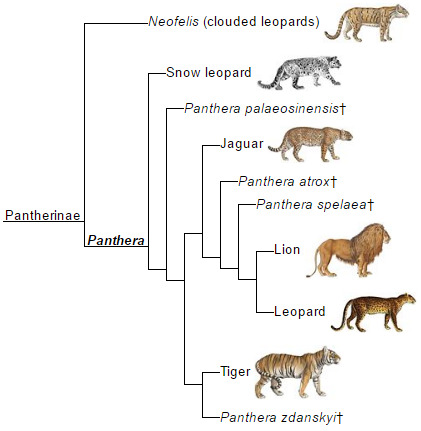
because they’re all part of the same lineage, they share a lot of traits like the ability to roar.
and cheetahs are actually members of a completely different cat lineage altogether, the genus Acinonyx!
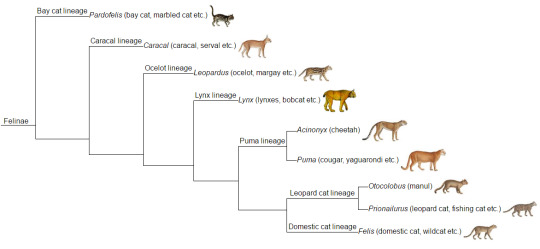
they’re not very closely related to the big cats at all and are actually most closely related to Pumas, which you can totally see if you stack them up next to each other and squint really hard.
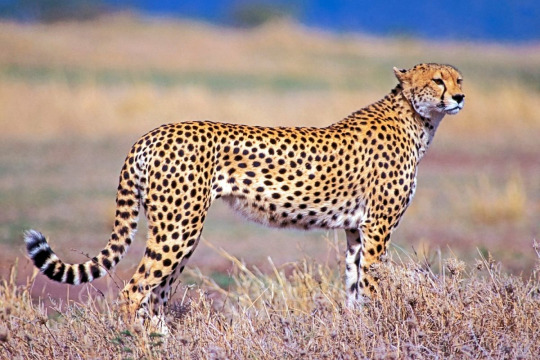
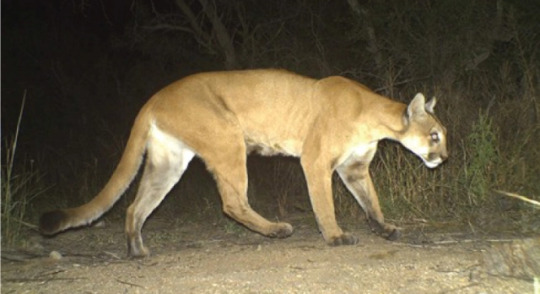
it’s okay though, the cheetah can still be the biggest cat in our hearts :’)
37K notes
·
View notes
Text
Phylogenetic wild cat tournament
Panthera lineage - Final
Subfamily: Pantherinae - THE BEST BIG CAT
Genus: Panthera and Neofelis
Depth: 3 (2 wins away from championship)

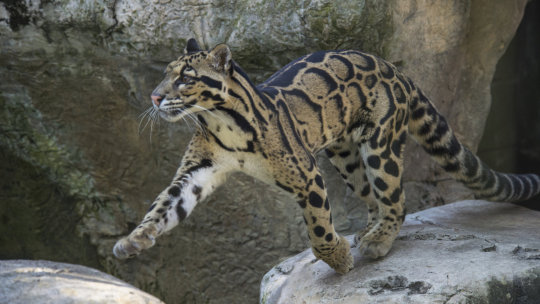
Although the term "big cat" is usually restricted to the Panthera genus, here i use it as the synonym of the Panterinae subfamily - even more since it's an often generally used word for every larger sized felines including pumas and cheetahs or even more species.
Bigs cats are famous of their ability to roar, thanks to the anatomy of their throats - however in reality this isn't true of either of our finalists, only the other Panthera species: tiger, lion, jaguar and leopard.
Snow leopard

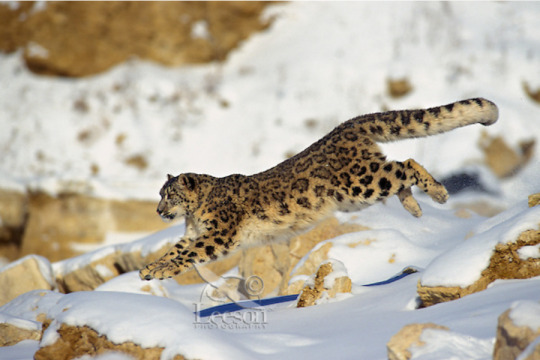
Clouded leopard
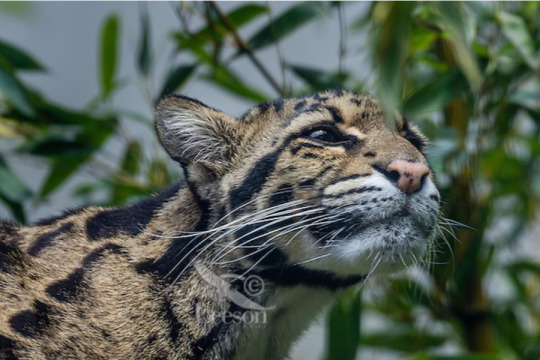
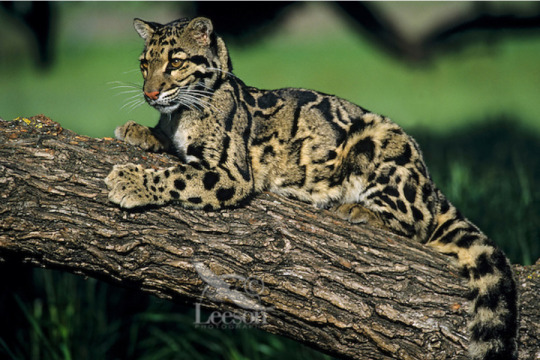
#polls#cats#tournament poll#phylogenetic wild cat tournament#panthera lineage#snow leopard#clouded leopard#two childhood favourites of mine#i'm an influencer now
163 notes
·
View notes
Text
okay im listing the lineages found around Solvan (where the comic begins) and ones who the characters would potentially meet are, in order of how likely they are to meet them
Bokten (rodent guys, the Sipannen (capybara) are the most common, fairly nomadic, the other two types are more sendentary and live deep in forests/mountains)
Other Humans (without fae ancestry, so muted colours, round ears, more robust builds)
Giants/Ordene (mixed with humans to combat falling fertility rates, most retain some semblance of horns/hooves/etc)
Felidae Kiil (the caracal line and part of the marmorata line, caracals are bronze midsized plains cats (with the exception of serval, which are tall and spotted) and the temmincki (of marmorata) are marbled midsized forest cats)
Panthera Kiil (much more rare, only the onca (jaguars) live on this side of the continent, and tend to remain in their city)
Gnoles (hyena-like, only a small desert group live nearby, another in the mountains, and then the Merkoff clan are all the way over the mountains in Ava)
specifically for esurience i want each race/lineage to have their cultures defined in part by their own biology. it just always felt boring that so many fantasy races are human but a little to the left!! boring! if you're going to do non-humans, there's so much to get weird with
like the dogs i'm thinking always give birth to identical twins (did you know that armadillos always give birth to identical quadruplets?) and already that's prime content for "heir and the spare" type stuff.
the kiil (cat people) on the other hand can have 3-4 per litter, so the main culture in leo are more careless about children--they survive if they survive, and being able to make it to adulthood is considered a big deal. maybe they dont even get their names until they're adults idk. the fact that kiil tend to eat/need more meat and proteins is also a factor that limits their numbers, so in the end it's unfortunately extremely beneficial to not have all your kids make it because how are they gonna feed them all.
4 notes
·
View notes
Text
okay i wanna write more about that pokemon post
first of all i stand by egg groups not defining species. in the real world the biological species concept states that a species is defined by being reproductively isolated, meaning it can't produce fertile offspring with any other species. however, there are plenty of groups of organisms that we consider species that are perfectly capable of reproducing with different species and producing fertile offspring, leading to hybridization and introgression zones and etc etc etc. there are lots of species concepts such as ecological (species is defined by their niche in their environment) or morphological (based on the physical form)
to explain in the simplest words why the biological species concept doesn't work with pokemon: skitty and wailord. there's no way they're the same species just because they share the field egg group (why is wailord in the field egg group anyway)
regional variants are the same species as their standard versions, but probably have a subspecies name that's different. maybe scientific names work like [genus] [species] [individual pokemon and/or variant] where like, meowth would have the same genus/species as persian, but the parts of the evolutionary line and the variants would have that third part being different. panthera elegans primis (normal meowth) vs panthera elegans alolaprimis (alola meowth)
typing can be taxonomically linked, but can also be convergently evolved. pikachu and dedenne obviously have a common ancestor that was electric type but alolan raichu being psychic type doesn't mean it has any close evolutionary link with like, medicham or something
grouping pokemon into types at all is primarily a human invention - yeah all pokemon can manipulate energy/elements in certain ways, and will be better at certain attacks than others, but exactly what types a pokemon is is mostly a game mechanic. like, drapion is poison/dark, but there's no reason it shouldn't also be proficient at bug type moves because a) skorupi is a bug type and b) drapion is still very bug-like.
plus if we wanna get into splitting territory i bet in-universe theres people who argue there should be a sound type (who could deny exploud is a prime example of it, as well as the sing attack?) or light type, among others. and then the lumpers are like "theres no functional difference from normal type so why bother splitting them up"
of course all of this assumes arceus and/or mew didn't just create all the pokemon in their current state, in which case taxonomic lineages don't matter because everything is equally "related"
and THEN we get into the issue of man-made pokemon like porygon. that's probably a whole different post.
28 notes
·
View notes
Note
Jess internally: ok this girl is clever look at her charming everyone but not me I’m strong I wont let a pretty face stop me I’m better then that IM A SUPER HERO
Juleka: hey
Jess: hi (:
Jess internally: f u c k
Also
Jess: these heroes are tricky I shouldn’t trust them right away they do seem rather skilled tho but I have no proof there actually trust worthy
Panthera: hey~
Jess: h E y w E s h OUL d bE f ri en d s p ls
Sparrow: I can’t out myself as Sparrow and ruin the entire set up that is and has been the lineage of different Knight Owls and Sparrows or else-
Panthera: Hey-
Sparrow: Hi I’m Jess can I have your number-
27 notes
·
View notes
Photo

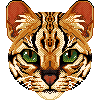




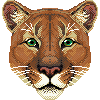

New project! Cat icons. Post 1/2: portraits.
The sizes are not to scale ofc - each icon is 100x100px. I've been reading about cat evolution and here are small pixel drawings of 1 cat from each of the 8 extant Felidae lineages: 1 ocelot lineage: ocelot 2 leopard cat lineage: leopard cat 3 bay cat lineage: Borneo bay cat 4 domestic cat lineage: domestic cat 5 lynx lineage: Eurasian lynx 6 caracal lineage: caracal 7 cougar lineage: cougar 8 panthera lineage: lion
#pixel art#pixel taxonomy#felidae#panthera leo#puma concolor#caracal caracal#lynx lynx#felis catus#catopuma badia#prionailurus bengalensis#leopardus pardalis#animals and nature#lion#cougar#caracal#eurasian lynx#cat#domestic cat#bay cat#borneo bay cat#leopard cat#ocelot#scientific illustration
56 notes
·
View notes
Text
"feline" is not a taxonomic term, but an adjective describing cats. to answer your question, let's dig into the taxonomy of cats as we know them.
there are a lot of animals in the order carnivora, including cats. there are two big suborders in carnivora, which are feliformia and caniformia. basically, we divide carnivores on whether they are closer to cats or dogs.

(credit valkenburgh et al)
the blue shows feliform families, and the red caniform families. the more branches two families have in common, the more recently they shared a common ancestor. there are a lot of animals we consider cat-like which are not cats, like mongooses and hyenas. there are lots of general distinctions we can make between feliforms and caniforms, on the basis of both morphology and lifestyle, but the one true dividing characteristic is the structure of the part of the skull surrounding the inner ear.
we don't have a definitive common ancestor of feliforms in the fossil record, but this phylogeny shows that nandiniidae diverged the earliest. we would call them "basal", because they are closest to the base of the tree. the family nandiniidae contains only one species, the african palm civet.
moving further, we can look at the family felidae. this family actually contains all the animals we think of today as cats, both wild and domestic.

(credit johnson et al)
now, this one is a little trickier to read if you aren't familiar with phylogenies (i couldn't find a good one with pictures), but some of the species names should be at least a little recognizable. at the top are members of the genus felis, which contains our modern housecats and their relatives. felis catus itself does not appear because it diverged so recently that it would be difficult to show. the further down the list of species you go, the longer ago the species diverged, and the less recently the cat has shared a common ancestor with domestic cats. the most divergent is the branch which contains lions, tigers, leopards, jaguars, snow leopards, and clouded leopards. (this image is a couple of years out of date - newer phylogenies have led us to reclassify uncia uncia (the snow leopard) as panthera uncia). the closest branch to felis is that containing several small asian wildcats, including the pallas and fishing cats. there are a lot of traits that are common to all of these cats, including but not nearly limited to: digitigrade feet, a scratchy tongue, whiskers, and a vomeronasal organ (similar to snakes and lizards, this allows them to "taste the air"). cats also lack the ability to taste sugar.
the earliest known members of the family felidae are members of the genus proailurus, who lived in europe and asia around 20 to 30 million years ago.

(credit werdelin et al)
here is an artist's depiction of proailurus lemanensis. so cute!
are we done here? of course not! we can narrow our cat search down even further to the subfamily felinae. these are cats with retractable claws and an ossified hyoid (bone in the throat).

(the further i go, the harder it is to find legible diagrams. credit wikimedia commons)
if we want to be pedantic (and i do), this is not a phylogeny but a cladogram, because it is not time-calibrated. it reads exactly the same, though. this is basically just the top half of the phylogeny we saw before. these genera of cats are all more closely related to domestic cats than the pantherinae lineage, which is what we consider the big cats. though we call it a big cat, cheetahs are actually in felinae!
the oldest known member of felinae is pratifelis martini, from around 10-11 million years ago in kansas. i do not have a picture, because it is only known from one jawbone. other early members of felinae include pristifelis, from 6-9 million years ago in southern europe and southwest asia, and the american cheetah, miracinonyx, from 2.5-0.02 million years ago.
let's take this a little farther, and look only at the genus felis! felis contains several species of wildcat, including the african wildcat, from which housecats were domesticated. i don't have a phylogeny for this one, because no one makes a phylogeny of just one genus. felis likely diverged around 6-7 million years ago. there is one extinct member known from this genus, called felis lunensis. it is known from europe around 2.5 million years ago, and could be the ancestor of the modern european wildcat, felis silvestris.

(credit peter cairns)
lacking a picture for felis lunensis, this is its closest living relative, the european wildcat. a little bigger and meaner than a housecat, but otherwise hard to distinguish.
i hope this answers your very simple question about cats.
studying for invertebrate paleontology final. please ask any and all questions about paleontology, evolution, and biology, and i will answer as well as i (and my bestie "online resources") can!
10 notes
·
View notes
Note
Hmm lets go for page 45 and 195!
45 is the Sunda Tiger (panthera tigris sondaica), the smallest of the tiger subspecies!
and 195 is the Indochinese Jungle Cat (felis chaus fulvidina), subspecies of jungle cat! of the "wildcat lineage" so looks similar-ish to domestic cats
3 notes
·
View notes
Link
So there are two subspecies of cave lion! Molecular phylogenetic work supports previous morphological observations that Eurasian and Beringean cave lions formed distinct lineages, sharing a common ancestor to the exclusion of African lions (and diverging before the MRCA of extant lions). The estimated mtDNA divergence time between cave lions and African lions is 1.85 million years ago, supporting Panthera spelaea as a distinct species (under the phylogenetic species concept).
Oddly, there doesn’t seem to be a single mention of Panthera atrox anywhere...
15 notes
·
View notes
Text
Boredom sparked dark idea enjoy!
So this spawned out of pure boredom/being unable to sleep...Horde Prime has been around for a long long long time. So it is quite possible the man sired a few kids.....I just decided to make a few that were the ‘highlights’ of his lineage. Can’t imagine they lived long given Prime’s temperament, his nature, and the sheer mental neglect/abuse they would suffer.
So here we go!
---------------------------
Name: Eilnowy
Rank: First Princess (and only child) of the old empire
Bio: She might have been young but she saw what her father was becoming. Eilnowy helped the first rebellion to overthrow him at the age of 16. Horde Prime was so sure he was safe in his own fortress he never thought his own blood would be his downfall. Eilnowy did her damndest to be a voice of reason and push for things to be better on her home world. She even managed to make allies of her father’s former enemies the first ones...that lead to some spicy rumors. The princess, she never felt comfortable taking the title of queen, lived a long life and did a great deal. She died believing she’d cleaned up much of the mess her father had left behind….she passed the day before her father and his clones set foot on the planet once again.
Planet/place of birth: Plant Llyr
Died at age: Lived to a ripe old age.
Cause of death: Old age
Last words: Unknown
Consequences of death: First ones hunted down and believed to have been wiped out. As he was convinced THEY were the ones who killed him, via their sneaky magic.
Other:
-Supposedly had a grandchild that went to explore space with the first ones...no one knows for certain.
-Her name is that of the ‘forgotten’ disney princess from the black cauldron (I like that underrated sassy lass).
~~~~~~~~~~~~
Name: Odette
Rank: First Princess of the New Empire
Gender: Female
Bio: Quiet, shy, booky. She liked playing in the water, water birds, fish...basically anything water based. Had a stuffed swan. First time off the ship she regarded it with wonder. Despite her curiosity she was perfectly well behaved. Week after that event she started acting sick. Two weeks later she was dead.
Planet/Place of birth: Velvet Glove (Ver. 2)
Died at age: 8
Cause of death: Sickness. The ship was so sterilized she didn’t develop proper antibodies or immune system.
Last words: “Why is it so cold?”
Consequences of death: Clones received shots to bolster immunity/fight off disease. Ship was kept clean but only some rooms kept sterile. Any sick clones were culled immediately upon discovery.
Other:
- Inspired by another forgotten princess, non-disney this time around.
~~~~~~~~~
Name: Akun
Rank: First Prince of the New Empire
Gender: Male
Bio: He just wanted to make his father proud. Akun never understood why his mother was disappointed in him, but the rare times he got a smile from his father were what he lived for. He was smart, but his eagerness and sometimes clumsy nature made him appear stupid. Akun did a lot to help with the tech of the empire in the early days of the new empire. He tried his hand at reaching out to natives, he believed his father wanted to help, and wanted to help his father help others. As he left the village, feeling like his father would at last be proud of him once again, the natives pushed boulders down onto him and his party before the teleporter could pick them up.
Planet/place of birth: Planet Panthera in the Kings’ Galaxy
Died at age: 18 years old
Cause of death: Fatally crushed in a landslide.
Last Words: “I tired, I just wanted him to be proud of me again….I wanted him to lo….”
Consequences of death: The tiny solar system where Akuna died is full of dead planets. All of them were stripped of all minerals, life, and useful materials...and then bombed out for good measure.
Other-
-He’s a big nod to one of my all time favorite tragic characters (hint his name is that character’s name spelled backwards).
-Arguably the last death that truly personally affected Prime.
~~~~~~
Name: Sypher
Rank: The Seventh Prince of the New Empire
Gender: Male
Bio: Sypher was charming, intelligent, determined, egotistical, and manipulative. He was always willing to play the perfect son for his father. Never stepping a toe out of line and always mindful of his manners, all the proper etiquette to his face. This kept the old man off of his back. Always waiting, biding his time till he could overthrow the old man. Sypher got his chance when he was granted his father’s blessing to research a new source of power. Once he had it in his hands he aimed to destroy the old man and seize the throne for himself. One blast and the ship was gone...but the planet shattered beneath his feet reducing him to ash.
Planet/Place of birth: Planet Providence in the Eye Galaxy.
Died at age: 19
Cause of death: Magic induced planetary destruction.
Last words: “Imagine what could be done with magic at the empire’s command!”
Consequences of death: Velvet Glove v. 3 destroyed. Prime’s fear of magic was heightened.
Other:
-Sypher came the closest to being a genuine threat to Prime for a long long time.
-The emperor had a feeling Sypher was hiding something, but never put it together, as why would his own blood turn against him?
-He’s a nod to Bill Cipher, hence the name and place of birth.
#Horde Prime#boredom makes me do weird things#spop#she ra and the princesses of power#kinda a headcanon#head canon-ish#no way this man was a good parent#no way no how#references#i need to sleep#someone stop me
3 notes
·
View notes